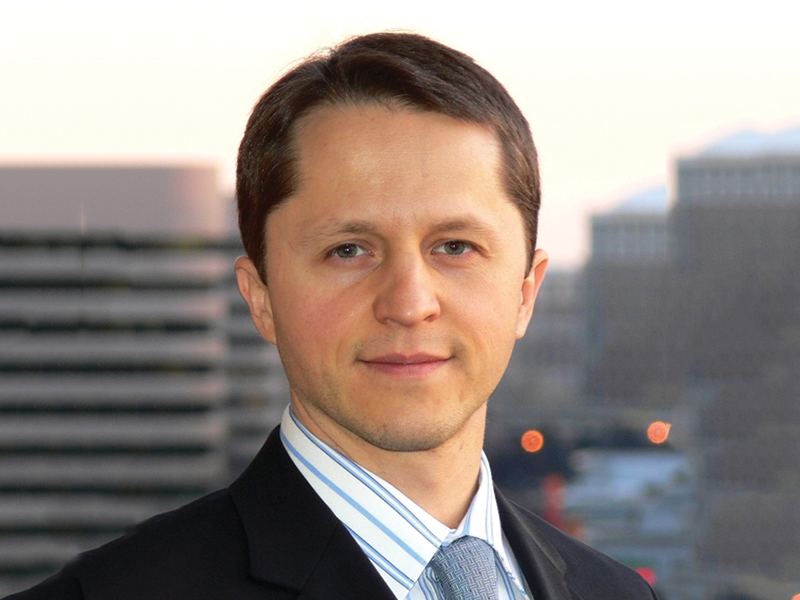Notes from the Yellow Brick Road
Why doesn't reality fit economic models? Economists at the National Association of Business Economics addressed this question and more at the Economic Policy conference last month.
By George Ratiu
 Why doesn’t reality conform neatly to economic models?
Why doesn’t reality conform neatly to economic models?
That vexing question was in the air at the National Association for Business Economics’ (NABE) annual Economic Policy conference during the second week of March. Economists from around the country converged on Washington, D.C., to discuss such heady topics as “Missing Market Makers: Has Regulation Impaired Financial Market Liquidity?”, “The Role of Financial Stability and Financial Conditions in Monetary Policy” and “Policy Imperatives for Boosting Global Growth and Prosperity.”
To put it another way, the attendees grappled with the gap between the economy as it is and the one predicted by our models. What stood out to me this year was the growing number of voices speaking to the divide between measurement of economic indicators and actual performance.
By the numbers
We are now seven years into the recovery from the Great Recession, and by most traditional measures, we are apparently doing well. Unprecedented monetary policy has pumped billions of dollars into the financial system, shoring up banks’ balance sheets, restoring market confidence and boosting liquidity. From quantitative easing to forward guidance, the Federal Reserve has aimed to lower the unemployment rate while fine-tuning approaches toward its 2 percent inflation target.
Following suit, gross domestic product has posted a positive, if modest, annual growth rate of about 2 percent. The gain in economic activity has been driven by consumer spending—especially for durable goods, like cars, furniture and recreational vehicles—which in turn, has benefitted from rising employment, low gasoline prices and the expanding availability of credit.
Payroll employment added a net 13.8 million jobs from 2010 to 2015, effectively compensating for the 8.7 million jobs lost during the Great Recession. Hiring continued apace during the first two months of 2016, generating net gains of 172,000 new jobs in January and 242,000 in February. The unemployment rate declined from 10 percent in 2009 to 5 percent by the close of 2015. The average duration of unemployment declined from 31 weeks in the first quarter of 2015 to 28 weeks by the end of the year.
Real estate’s rebound
Real estate has also rebounded, of course, with both residential and commercial price indices posting rising values. Home sales have climbed from a low of 3.8 million in 2008 to 5 million-plus last year. Median prices for existing homes topped $236,000 in May and June 2015, surpassing their 2006 peak. Commercial prices in 2015 have also cleared the high-water mark achieved in 2007.
Despite these encouraging indicators, Americans are uneasy and getting more so. As measured by the Conference Board, consumer confidence declined from slightly more than 100 at the midpoint of 2015 to 96.3 in December 2015, and then slipped to 92.2 in February 2016. The last time confidence was comfortably more than 100 was in 2007. Even then, however, confidence levels fell short of those recorded during the “dot com” boom of the soaring 1990s and early 2000s.
While the headline unemployment figure, which economists refer to as U-3, was less than 5 percent as of February, the broader rate approaches 10 percent when underemployed workers and those who work part time for economic reasons (U-6 in economist- speak) are counted.
Old metrics, new realities
Another telling number is the labor force participation (LFP) rate. That indicator rose steadily through the second half of the 20th century as large numbers of women entered the labor force. The LFP rate peaked at 67.3 percent in early 2000, but by the end of last year, it had dropped to 62.5 percent. To put this into historical context, today’s LFP rate is about the same as it was in the late 1970s.
Stated more simply, with one in 10 Americans unemployed or underemployed, and another four in 10 out of the labor force altogether, the economy is leaning on the remaining five out of 10 to keep pulling it out of the Great Recession. And those five face rapidly rising housing costs, steep prices for new cars, stagnant wages and large student debt.
Back at the NABE policy conference in Washington, economists were coming to terms with the reality that long-accepted metrics and their associated policy prescriptions are less reliable than once thought. Several speakers underscored the point that the quality of government economic data has been diminished by declining survey participation. The Bureau of Labor Statistics’ monthly employment figure, which is based on a survey of 60,000 households, has a confidence interval of more than 100,000. That means that the January 2016 figure of 172,000 new employees has a 90 percent likelihood of being somewhere between 72,000 and 272,000.
In addition, as a former Federal Reserve governor poignantly illustrated at the conference, the models used by the central bank to measure the economy and set monetary policy are rooted in early 20th-century assumptions. Chief among them is the construct that the U.S. economy is self-contained and domestically based. The role of globally integrated financial, commodities and trade markets is inadequately modeled, likely obscuring major moving parts in economic relationships.
The economy is still growing in 2016, and we have certainly come a long way from 2008. However, as we tune in to the presidential election, financial market volatility, and negative interest rates at central banks around the world, I can’t help but think of Dorothy’s remark in The Wizard of Oz: “Toto, I’ve a feeling we’re not in Kansas anymore.”
George Ratiu is director of quantitative and commercial research for the National Association of Realtors.







You must be logged in to post a comment.